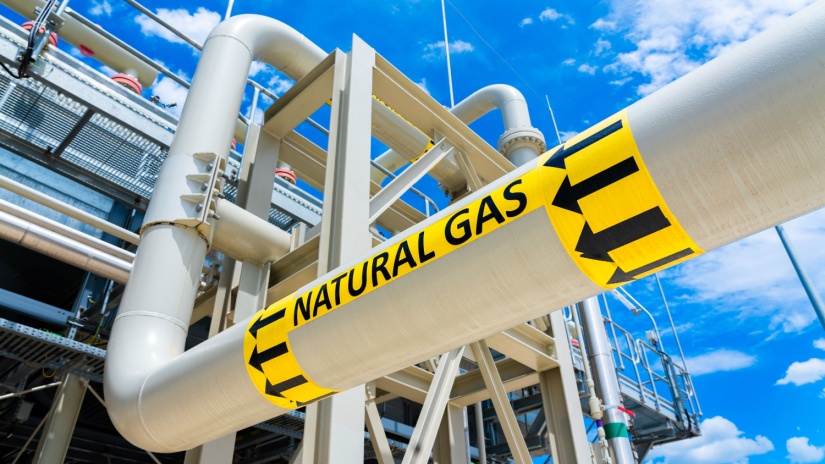Knowledge Centre
Natural gas prices in 2025: What you need to know

Natural gas is an essential energy source for households and industries across Australia, powering everything from heating systems to cooking appliances.
Over the years, natural gas prices have fluctuated due to various factors such as global demand, domestic supply, and government policies. Understanding current pricing trends and anticipating future costs is crucial for managing energy expenses effectively.
In this article, we will explore the current state of natural gas prices in Australia, examine the factors driving those prices, and provide tips on how to reduce your natural gas bills. Additionally, we’ll look at predictions for the future of natural gas prices, helping you stay informed about potential changes to your energy costs.
Current natural gas prices and key factors affecting them
As of 2025, natural gas prices in Australia continue to show volatility, influenced by both domestic and international factors. The price for natural gas can vary between states, with significant differences between regions like New South Wales, Queensland, and Victoria.
On average, residential natural gas prices in Australia range between $1.50 and $4.00 per gigajoule (GJ), depending on the location and service provider. The price you pay also depends on whether you are on a regulated or market offer, as some states have price caps in place to protect consumers.
Key factors driving these price fluctuations include:
- Supply and demand: Global and domestic supply conditions play a huge role in setting prices. Droughts, geopolitical instability, or changes in the supply chain can affect global natural gas prices.
- Domestic production: Australia is a major exporter of liquefied natural gas (LNG). The shift in focus from domestic supply to international export has led to higher domestic prices.
- Government policies: Policy changes, like carbon pricing or subsidies for renewable energy, can impact the demand for natural gas and, subsequently, its price.
- Seasonal factors: Gas consumption tends to increase during the winter months, leading to price hikes due to higher demand. Additionally, the summer months in some regions can see increased demand for natural gas in electricity generation.
How natural gas prices are determined and market influences
Natural gas prices are determined through a combination of market forces, government regulation, and energy market structures. Prices can be classified into two major types:
- Wholesale prices: These are the prices at which gas is bought and sold on the market before it reaches consumers. They are influenced by global markets and can fluctuate based on demand from countries importing Australian LNG.
- Retail prices: These are the prices consumers pay, which include wholesale prices, transmission and distribution costs, and any additional fees that retailers add. Retail prices are regulated in some states, while others follow market-based pricing.
The most significant influences on natural gas prices in Australia include:
- Global demand: As a major LNG exporter, Australia’s natural gas prices are often linked to international demand. Increased demand from Asian markets such as Japan, China, and South Korea has driven up prices.
- Infrastructure investments: Investments in pipelines and other infrastructure to transport gas across the country can influence prices, particularly if infrastructure is ageing or there is insufficient capacity.
- Climate policies: As the government continues to focus on reducing carbon emissions, the shift towards renewable energy sources may reduce reliance on natural gas, potentially lowering demand and impacting prices in the long term.
Tips for saving on natural gas bills
With natural gas prices showing a significant range, finding ways to save on your natural gas bills can make a big difference. Here are some practical tips:
- Upgrade your appliances: Old or inefficient appliances, such as gas heaters, hot water systems, or stoves, can waste energy and increase gas consumption. Upgrading to energy-efficient models can significantly reduce your energy use.
- Switch providers: Compare natural gas providers in your area to find the most competitive rates. Many retailers offer discounts and special deals, especially for new customers.
- Insulate your home: Proper insulation helps retain heat during the winter months, reducing the amount of energy needed for heating. Sealing drafts around windows and doors can also keep your home warmer and reduce heating costs.
- Adjust your thermostat: Lowering your thermostat by just a few degrees can result in lower natural gas consumption. Consider investing in a programmable thermostat to regulate your home’s temperature efficiently.
- Reduce hot water usage: Heating water is a significant part of natural gas consumption. Install water-saving showerheads and reduce the temperature on your hot water system to save energy.
- Monitor your gas usage: Track your usage to identify areas where you can cut back, such as reducing long showers or turning off unused appliances. Many energy retailers now offer usage tracking through their apps or websites.
Future predictions for natural gas prices in Australia
The outlook for natural gas prices in Australia will largely depend on several key factors, including the evolution of the global energy market, domestic supply-demand balance, and government policies. Experts predict the following trends for the next few years:
- Export market influence: With Australia being one of the world’s largest LNG exporters, global demand will continue to drive domestic prices. If Asia and other regions see sustained growth in LNG demand, Australian natural gas prices could remain high.
- Shift towards renewables: As Australia increases its focus on renewable energy sources, demand for natural gas may decline, potentially stabilising or lowering prices. However, the transition to a low-carbon energy system will take time, and natural gas will likely continue to play a significant role in the energy mix for years to come.
- Policy impacts: Future government policies, such as carbon pricing or energy subsidies, could either push up or reduce natural gas prices. If new policies aim to promote renewables over fossil fuels, we may see a decrease in demand for natural gas, leading to price reductions in the long term.
Domestic production and infrastructure: Australia’s natural gas production capacity and the expansion of infrastructure will also influence prices. In particular, improvements to pipeline networks and local distribution systems could help manage price fluctuations by ensuring a more reliable supply of gas.
Connect with Compare Energy
Natural gas prices in Australia in 2025 will be influenced by a combination of domestic factors, global market trends, and government policies. While there may be some price volatility, understanding these factors and taking proactive steps to manage your energy consumption can help mitigate higher bills.
By considering energy-saving tips and staying informed about market trends, Australian households can better navigate the fluctuating landscape of natural gas prices.
Want to save more on your gas bills? Contact the team at Compare Energy on 1300 790 106 and we'll help you to make sure you're on a cost-effective plan that meets your budget.

